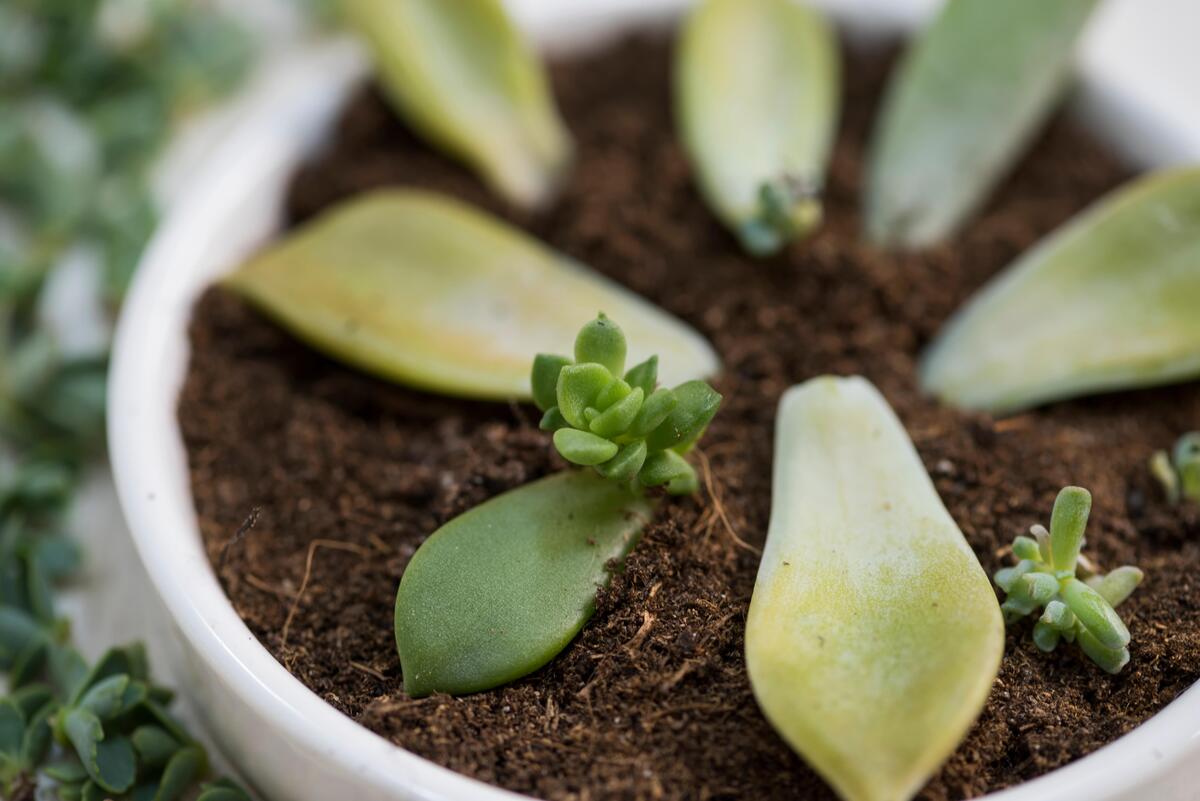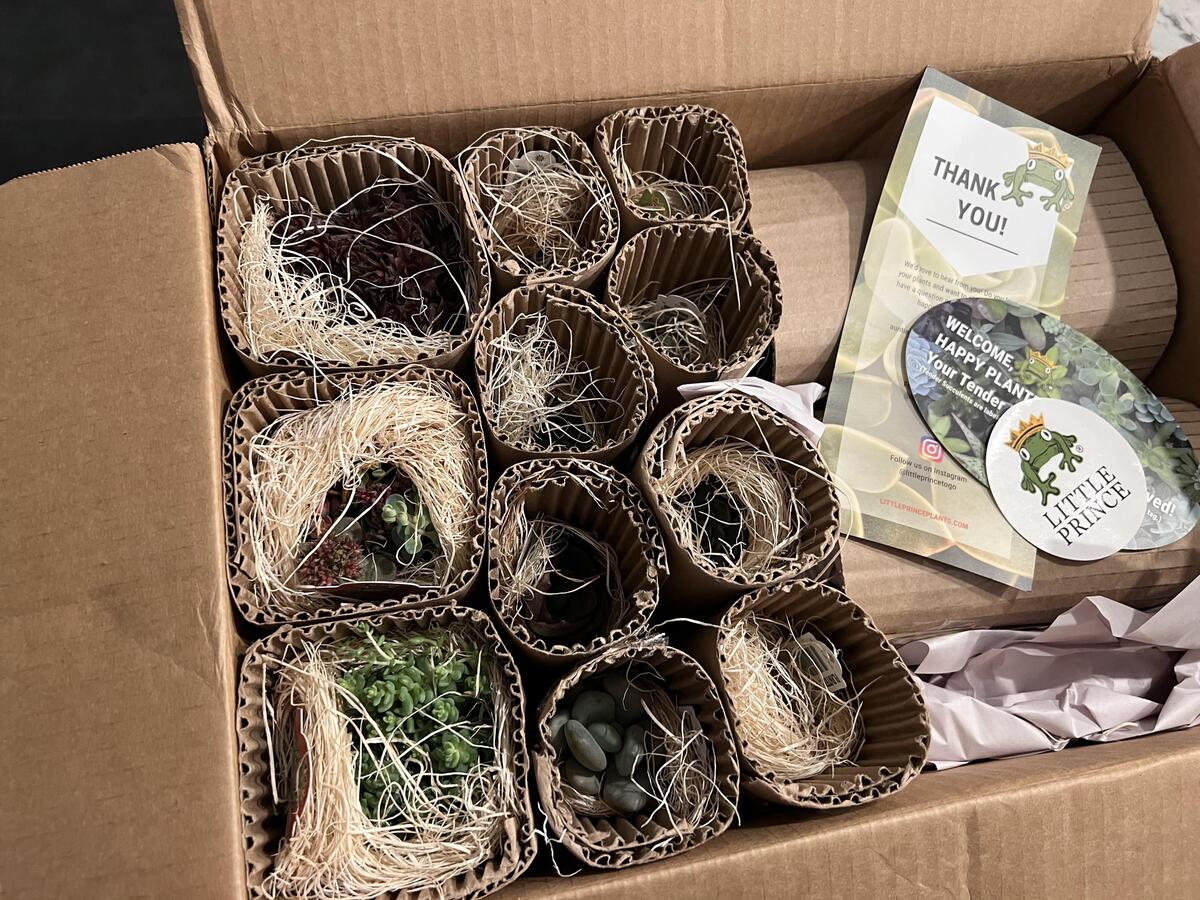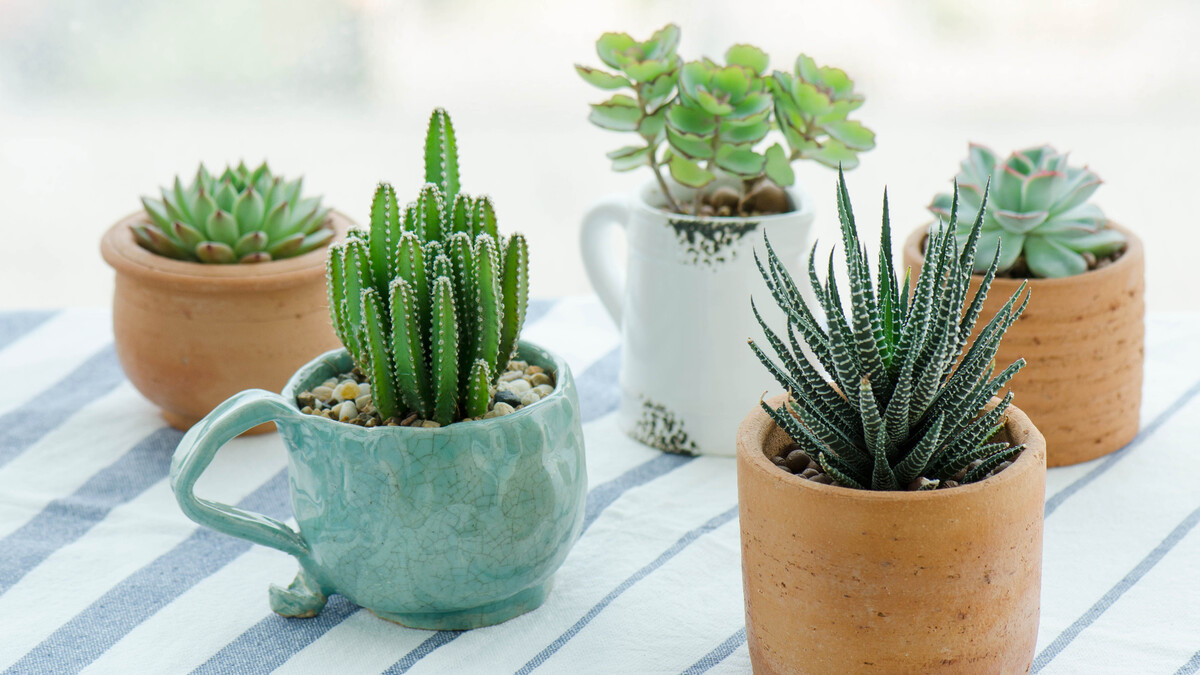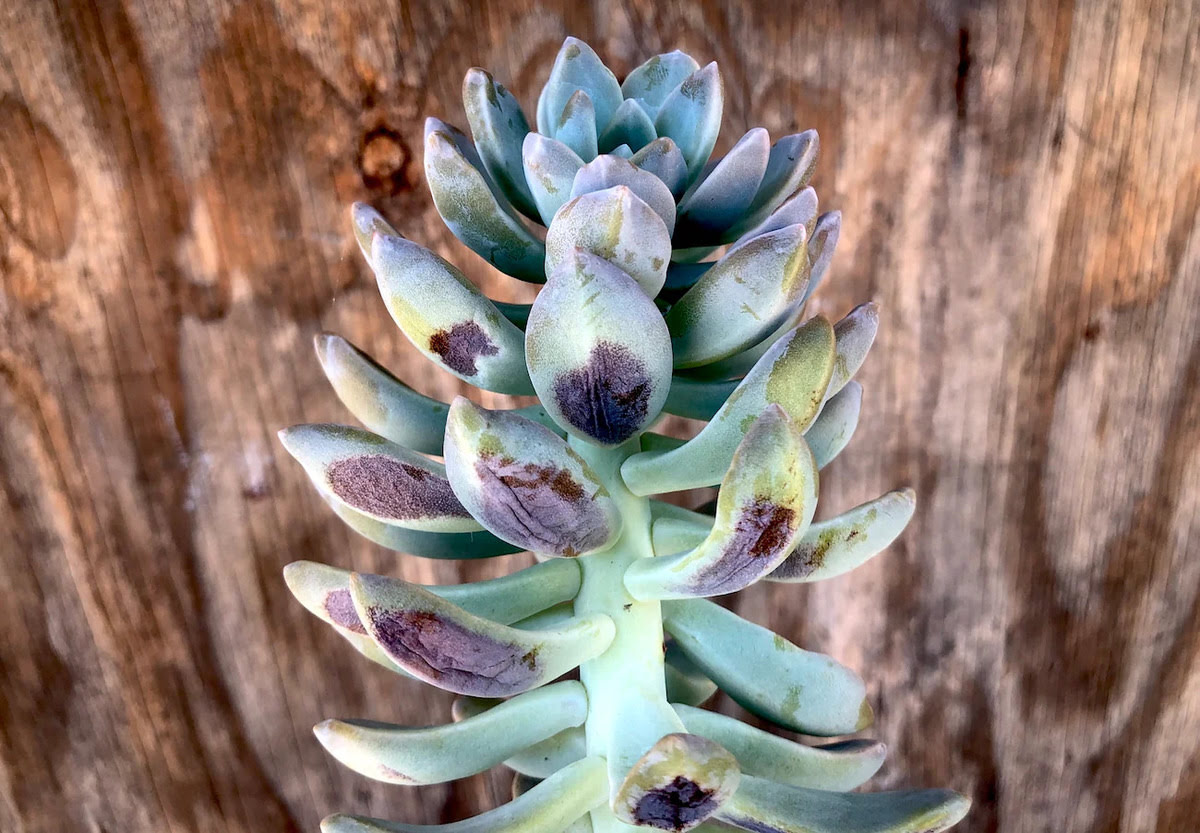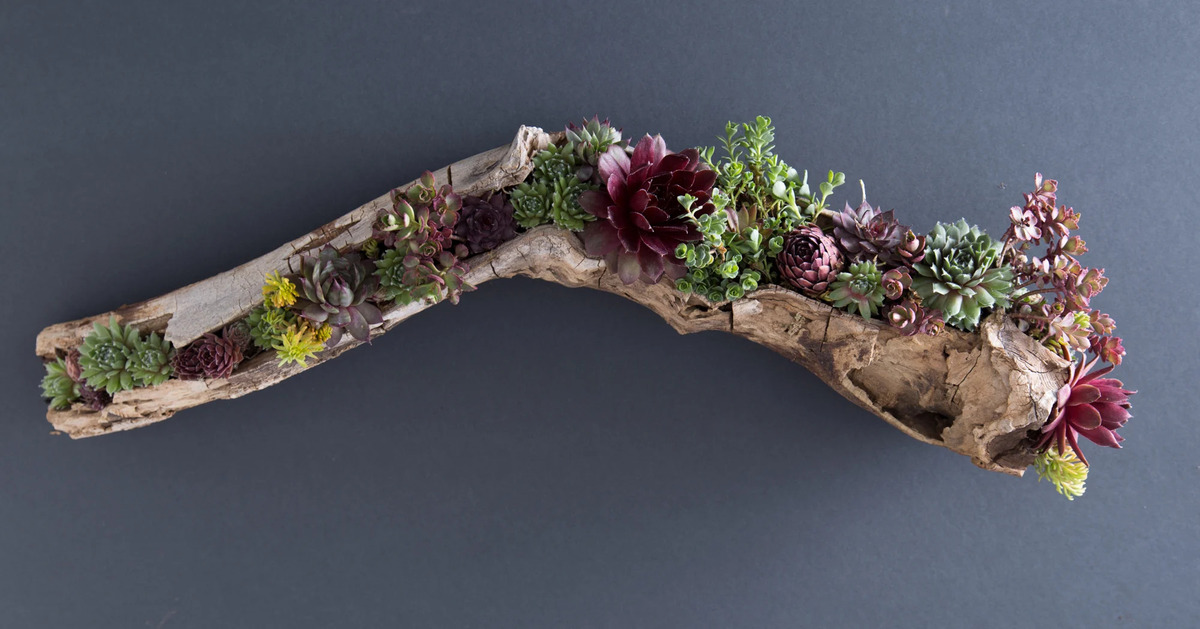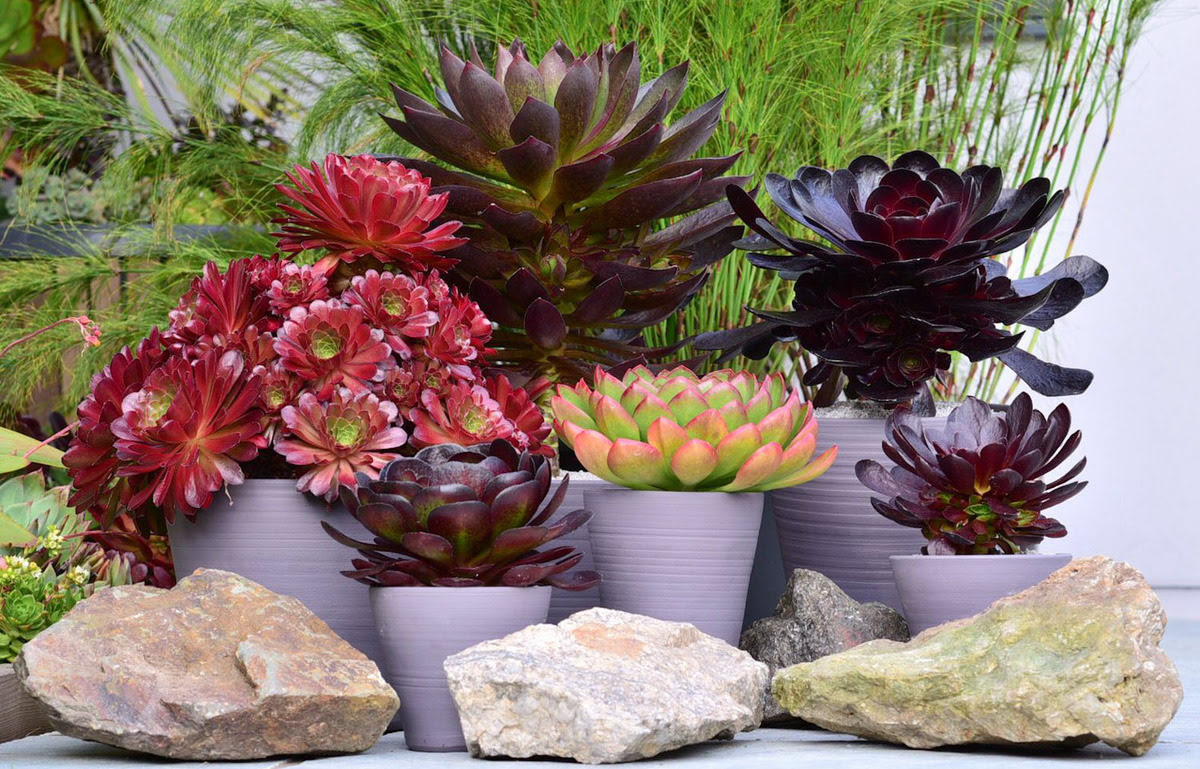Home>Gardening Techniques>Plant Care>How To Stress Succulents
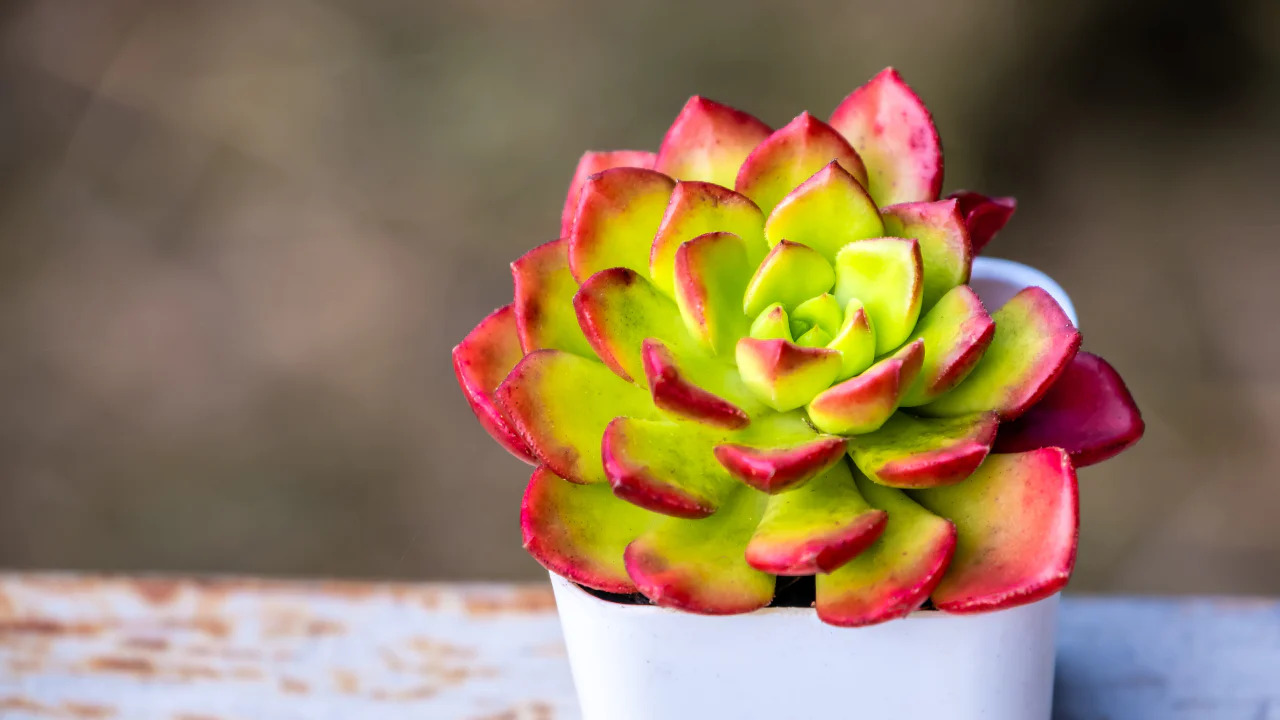

Plant Care
How To Stress Succulents
Modified: February 9, 2024
Learn how to care for your succulents and keep them stress-free. Follow our tips and advice for plant care to ensure your succulents thrive.
(Many of the links in this article redirect to a specific reviewed product. Your purchase of these products through affiliate links helps to generate commission for Chicagolandgardening.com, at no extra cost. Learn more)
Table of Contents
Introduction
Welcome to the wonderful world of succulents! These unique plants have gained immense popularity due to their low maintenance requirements, intriguing shapes, and vibrant colors. Whether you are a seasoned plant enthusiast or a beginner looking to add some greenery to your space, succulents are a fantastic choice.
One of the key factors to successfully caring for succulents is understanding how to properly stress them. Stressing succulents refers to intentionally subjecting them to certain conditions that mimic their natural habitat. This process enhances their resilience, promotes sturdy growth, and encourages vibrant colors. In this article, we will guide you through the essential steps of stressing your succulents to ensure their health and longevity.
Stressed succulents display unique characteristics that distinguish them from non-stressed plants. These characteristics include thicker leaves, intense coloration, and more compact growth patterns. By providing the right combination of light, water, temperature, and other care techniques, you can help your succulents thrive and achieve their full potential.
This article will walk you through each step of the process, from choosing the right succulents to pruning and propagation. By the end, you will be equipped with the knowledge and tools to create a stressful environment for your succulents, resulting in stunning and resilient plants that will be the envy of your gardening friends.
So, let’s dive in and embark on this exciting journey of stress and growth with succulents!
Choosing the Right Succulents
When it comes to stressing succulents, not all varieties are created equal. It is important to select the right plants that are naturally more adaptable to stress and can withstand the conditions you will expose them to. Here are some factors to consider when choosing the right succulents for your stress-inducing journey:
- Hardiness: Look for succulent varieties that are known for their resilience and ability to withstand different stress factors. Some examples include Echeverias, Sedums, and Haworthias.
- Growth Habit: Consider the growth habit of succulents. Some varieties, like rosette-shaped Echeverias, tend to be more compact and resilient, making them ideal for stress-inducing techniques.
- Color Variations: If you are aiming for vibrant and intense colors in your stressed succulents, choose varieties that are known for their striking pigmentation. This can add an extra level of visual appeal to your plant collection.
- Availability: Take into account the availability of succulents in your local area or online nurseries. This will ensure that you can easily find the right varieties to experiment with.
Additionally, make sure to research the specific care requirements of each succulent variety you are interested in. Different succulents have different preferences for light, water, and temperature. By matching the care requirements of your chosen succulents with the conditions you intend to provide, you will set yourself up for success in creating the perfect stress-inducing environment.
Remember, it is crucial to select healthy and well-established succulents from reputable sources. Inspect the plants for any signs of pests or diseases, and choose those with strong, undamaged leaves and a firm root system.
By carefully selecting the right succulents for your stress-inducing project, you are setting a solid foundation for their success. Now, let’s explore the next step in the process: providing adequate light for your succulents.
Providing Adequate Light
Light plays a crucial role in the growth and development of succulents. When it comes to stressing them, providing the right amount and intensity of light is essential. Here are some key points to consider when it comes to lighting for your succulents:
Intensity: Succulents thrive in bright, indirect light. However, when stressing them, you can gradually increase the light intensity to encourage more compact growth and vibrant coloration. Place your succulents in a spot that receives bright, direct sunlight for a few hours each day, gradually increasing the exposure over time.
Duration: Succulents, especially those undergoing stress, benefit from longer periods of light exposure. Aim for at least 6-8 hours of light each day. If you are unable to provide natural sunlight for this duration, consider supplementing with artificial grow lights. LED grow lights are a popular choice as they provide the right spectrum of light for optimal succulent growth.
Avoid Overexposure: While succulents love sunlight, it is important to avoid overexposure, especially during the hottest hours of the day. Excessive sun exposure can lead to sunburn and wilting. If you notice your succulents showing signs of stress, such as bleaching or yellowing of leaves, move them to a shadier spot or provide some shade during the hottest parts of the day.
Rotate Succulents: To ensure even light distribution and prevent one side of the succulent from stretching towards the light source, rotate your plants regularly. This will encourage more symmetrical growth and prevent legginess.
Observation: Keep a close eye on your succulents as you expose them to different light conditions. Observe their response and adjust accordingly. Each succulent may have slightly different light requirements, so being attentive to their needs will help you provide the best stress-inducing lighting conditions.
Remember, light is one of the most important factors in stressing succulents, so it is crucial to get this step right. With the right lighting, your succulents will reward you with stunning growth and vibrant colors. Up next, we’ll explore the importance of proper watering techniques for stressed succulents.
Watering Techniques
Watering succulents can be a bit tricky, especially when it comes to stressing them. Proper watering techniques are essential to maintain the health and resilience of your succulents. Here are some guidelines to follow when it comes to watering stressed succulents:
Frequency: Stressed succulents generally require less frequent watering compared to non-stressed ones. This is because the stress-inducing conditions, such as increased light and temperature, can cause the soil to dry out more slowly. Allow the soil to dry out completely between waterings to prevent overwatering, which can lead to root rot.
Water Quantity: When watering stressed succulents, it is important to water deeply. This means saturating the soil until the excess water drains out from the bottom of the pot. This helps ensure that the water reaches the entire root system and encourages healthy growth.
Avoid Overwatering: Overwatering is a common mistake that can quickly lead to the demise of succulents. Too much water can cause the roots to become waterlogged and susceptible to rot. Always err on the side of underwatering rather than overwatering.
Water Source: Use room temperature water when watering your succulents. Avoid using chlorinated or fluoridated water, as these chemicals can be harmful to succulents. If using tap water, let it sit out for 24 hours to allow the chlorine to evaporate. Alternatively, you can use rainwater or filtered water for your succulents.
Seasonal Adjustments: Adjust your watering routine based on the season. During the active growing season, succulents may require more frequent and deep waterings. However, during dormancy or cooler months, reduce the frequency of watering to prevent waterlogged soil and potential root rot.
Observation: Always pay attention to the signs your succulents exhibit. If the leaves start to shrivel, it may be an indication that they need water. However, if the leaves become mushy or discolored, it could be a sign of overwatering. Learn to read these signals to determine the watering needs of your stressed succulents.
Mastering proper watering techniques is vital for the success of your stressed succulents. By providing just the right amount of water at the correct intervals, you will promote healthy growth and prevent issues such as root rot. Now, let’s explore the importance of using the right soil and ensuring proper drainage for your succulents.
Proper Soil and Drainage
The right soil and proper drainage are key factors in successfully stressing succulents. Succulents have specific soil and drainage requirements to prevent issues such as root rot and ensure optimal growth. Here are some guidelines to follow when it comes to soil and drainage for your stressed succulents:
Well-Draining Soil: Succulents prefer porous soil that allows water to flow through easily. A well-draining soil mix helps prevent water from sitting around the roots and causing root rot. You can create a suitable succulent soil mix by combining equal parts of potting soil, coarse sand or perlite, and pumice or crushed granite to enhance the drainage capacity.
Avoid Heavy Soils: Avoid using heavy garden soil or soil mixes that retain too much moisture, as this can suffocate the roots of succulents. These plants are adapted to arid conditions and thrive in soil that allows excess water to quickly drain away.
Dry Soil Between Waterings: When using well-draining soil, it is crucial to allow the soil to dry out completely between waterings. This prevents overwatering and ensures that the roots stay healthy and free from excess moisture.
Adequate Drainage Holes: Always plant your succulents in pots or containers with drainage holes. This allows excess water to escape, preventing waterlogged soil. If you have a decorative container without drainage holes, consider using a nursery pot with drainage and placing it inside the decorative container.
Use of Succulent-Specific Soil Mixes: You can also opt for pre-made succulent soil mixes available in garden centers or online. These mixes are specifically formulated for succulents and provide the ideal balance of drainage and nutrients.
Top Dressing: Applying a layer of decorative stones or gravel on top of the soil can help improve drainage and prevent soil compaction. This layer also adds a visually appealing touch to your succulent arrangements. However, ensure that the top dressing does not fully cover the soil, as this can block water from reaching the roots.
Regularly Inspect and Repot: Over time, the soil in your succulent pots may become compacted, hindering drainage. It’s essential to regularly inspect the soil and repot your succulents if you notice signs of poor drainage or root congestion.
By providing the right soil and ensuring proper drainage, you are setting your stressed succulents up for success. The next section will cover the importance of considering temperature and humidity factors in creating a conducive environment for your succulents to thrive.
Temperature and Humidity Considerations
Temperature and humidity are critical factors to consider when stressing succulents. These plants are naturally adapted to thrive in arid and warm environments, so creating the right temperature and humidity conditions is key to their success. Here are some guidelines to follow:
Temperature Range: Succulents generally prefer temperatures between 60°F (15°C) and 85°F (29°C). However, many succulent varieties can tolerate slightly lower or higher temperatures for short periods. During the stress-inducing process, gradually expose your succulents to slightly higher temperatures, allowing them to adapt and develop more resilient growth.
Avoid Extreme Temperature Swings: While succulents can tolerate some temperature fluctuations, sudden extreme changes can shock and stress them. Avoid placing your succulents near drafty windows, heating or cooling vents, or areas with drastic temperature changes, such as near doors. Instead, provide them with consistent temperatures to promote healthy and stress-induced growth.
Humidity Levels: Succulents thrive in low humidity environments. High humidity levels can lead to excess moisture on the leaves and soil, resulting in issues such as rot and fungal diseases. It is essential to provide good air circulation to prevent excessive humidity buildup around your succulents. A fan or open windows can help achieve this. However, some succulents, such as certain Haworthias and Rhipsalis, tolerate higher humidity levels better than others.
Seasonal Adjustments: During the summer months, succulents benefit from the warmth and increased sunlight. However, it is essential to provide adequate shade or protection from intense midday sun to avoid sunburn. In the winter, when light levels are lower and temperatures drop, succulents may enter a period of dormancy. Reduce watering frequency, avoid frost, and provide them with some protection from cold drafts.
Indoor vs. Outdoor Care: When it comes to temperature and humidity considerations, it is important to differentiate between indoor and outdoor care. Indoor environments may have more controlled temperatures and lower humidity levels, while outdoor conditions can be more variable. Adjust your care routines accordingly to ensure that your succulents thrive in their specific environment.
Observation: As with other aspects of succulent care, be observant of how your plants respond to temperature and humidity conditions. Look for signs of stress or damage, such as leaf discoloration or shriveling, and adjust the environment accordingly.
Proper temperature and humidity considerations are crucial for the health and resilience of your succulents. By providing them with the right conditions, you will support their stress-induced growth and help them thrive. In the next section, we will explore the importance of avoiding overcrowding in your succulent arrangements.
Avoiding Overcrowding
When it comes to succulent care, giving your plants enough space to grow and thrive is crucial. Overcrowding can lead to a range of problems, including poor air circulation, increased humidity, and competition for resources. To ensure the health and success of your stressed succulents, here are some tips for avoiding overcrowding:
Choose Appropriate Containers: Select containers that provide enough room for the mature size of your succulents. If you plan to keep them in containers for an extended period, consider choosing pots that are one to two sizes larger than the nursery pot they come in. This allows room for growth and prevents overcrowding.
Proper Spacing: When arranging your succulents, give them enough space between each plant. This ensures adequate airflow and prevents leaves from touching and potentially trapping moisture. Proper spacing also prevents overcrowding at the root level and reduces competition for nutrients and water.
Trimming and Pruning: Regularly trim and prune your succulents to remove any crowded or overgrown stems, rosettes, or offsets. This not only enhances the overall appearance but also promotes better air circulation and prevents overcrowding issues. However, ensure you use clean and sharp tools to minimize the risk of disease transmission.
Replant if Necessary: If you notice that your succulents have outgrown their containers or are becoming too crowded, consider replanting them into larger pots or separating them into multiple containers. This allows each plant to have ample space to grow and reduces the risk of overcrowding-related problems.
Consider Growth Habits: Different succulent varieties have varying growth habits, such as spreading or clumping. Take these growth habits into account when planning your succulent arrangements to ensure that they have enough space to grow without overcrowding each other.
Regular Maintenance: Stay vigilant and regularly inspect your succulents for signs of overcrowding. Look for crowded or leggy growth patterns, yellowing or dying leaves, or reduced overall plant health. If overcrowding is detected, take appropriate action to provide more space for your succulents to thrive.
Arranging in Groups: Instead of cramming individual succulents into a tight space, consider grouping them together in arrangements based on their growth habits and visual appeal. This allows for a visually pleasing display while still providing ample space for each plant to grow and thrive.
By avoiding overcrowding, you create an environment that promotes optimal growth and reduces the risk of issues like fungal diseases and nutrient deficiencies. Your stressed succulents will have the space they need to flourish and display their unique characteristics. Next, we will explore the importance of pest prevention and treatment for your succulents.
Pest Prevention and Treatment
Keeping your succulents free from pests is essential to maintain their health and minimize stress levels. Pests can cause extensive damage to succulents, compromising their growth and overall appearance. Here are some tips for preventing and treating pests in your stressed succulents:
Inspect Regularly: Regularly inspect your succulents for any signs of pests, such as webs, chewed leaves, or discolored spots. Early detection allows for prompt action and prevents pests from spreading to other plants.
Isolate New Plants: When introducing new succulents to your collection, keep them isolated for a few weeks. This allows you to observe for any signs of pests before bringing them into close proximity with your other plants.
Proper Watering: Overwatering can create an environment conducive to pest infestations. Ensure that your succulents are not sitting in excess water, as this can attract pests like fungus gnats. Stick to a proper watering routine and allow the soil to dry out between waterings.
Improve Air Circulation: Adequate air circulation can help prevent pest infestations. Ensure that there is enough space between your succulents and avoid overcrowding them. Increasing airflow by using a fan or opening windows can also discourage pests from settling on your plants.
Natural Pest Deterrents: Consider using natural pest deterrents such as neem oil, insecticidal soaps, or a mixture of water and dish soap to treat infestations. These options are less harmful to beneficial insects and can effectively control common pests like mealybugs, aphids, and spider mites.
Organic Pest Control: If natural remedies are not sufficient, you may opt for organic pest control products. Always follow the instructions provided and ensure that the product is safe for use on succulents. Be cautious when using chemical pesticides, as they can harm beneficial insects and do more harm than good.
Manual Removal: For larger pests, such as slugs or snails, manually remove them from your succulents using tweezers or by hand. Regularly inspect the undersides of leaves and along the stems where pests often hide.
Quarantine Infested Plants: If you notice a plant with a severe infestation, isolate it from your other succulents to prevent the pests from spreading. Treat the infested plant separately and monitor it carefully.
Maintain Overall Plant Health: Healthy succulents are more resistant to pests and diseases. Provide them with optimal care, including proper light, watering, and nutrition, to ensure their overall health and ability to withstand potential pest attacks.
By implementing pest prevention methods and taking swift action at the first signs of infestation, you can keep your stressed succulents pest-free and thriving. In the next section, we will explore the importance of preventing root rot in your succulents.
Preventing Root Rot
Root rot is one of the most common and damaging issues that succulent owners may face. It is caused by excessive moisture around the roots, which leads to fungal or bacterial infections. Treating root rot can be challenging, so prevention is key. Here are some essential tips for preventing root rot in your succulents:
Well-Draining Soil: Using a well-draining soil mixture is crucial for preventing root rot. Succulents require soil that allows water to flow through easily, preventing excess moisture from accumulating around the roots. Avoid heavy or compacted soils and opt for a loose, fast-draining mix specifically formulated for succulents.
Proper Watering: Overwatering is the leading cause of root rot. Establish a watering routine that allows the soil to dry out completely between waterings. When watering your succulents, ensure that excess water drains out of the pot and does not sit in a saucer or dish. Remember, it is safer to underwater rather than overwater succulents.
Adequate Drainage: Plant your succulents in containers with drainage holes to ensure proper drainage. These holes allow excess water to escape and prevent water from pooling around the roots. If using decorative pots without drainage, consider using a nursery pot with drainage and placing it inside the decorative pot.
Use a Drying Period: Succulents benefit from a period of drying out and rest between waterings. Allow the roots to dry out fully before providing water again. This drying period helps prevent the onset of root rot and encourages healthy root growth.
Be Mindful of Temperature and Humidity: Succulents are adapted to arid conditions and can be more prone to root rot in high humidity or cool, damp environments. Ensure adequate air circulation and avoid placing your succulents in areas with excessive moisture or poor ventilation.
Inspect the Roots: During routine maintenance, check the root system of your succulents for signs of rotting. Healthy roots should be firm, white, and plump. If you notice mushy or discolored roots, it may indicate the onset of root rot. Remove any affected roots and repot the plant in fresh, well-draining soil.
Sterilize Tools: When pruning or repotting succulents, use clean and sterile tools. This helps prevent the spread of pathogens that can cause root rot. Disinfect your tools with a solution of one part bleach to nine parts water or use rubbing alcohol between uses.
Avoid Overcrowding: Overcrowding can contribute to root rot by restricting air circulation and causing moisture to linger around the roots. Give your succulents enough space and avoid planting them too closely together.
By following these preventive measures and maintaining proper care practices, you can significantly reduce the risk of root rot in your stressed succulents. Preventing root rot allows your plants to thrive and flourish, ensuring their long-term health and beauty. In the next section, we will explore the importance of pruning and propagation for stressed succulents.
Pruning and Propagation
Pruning and propagation are essential aspects of succulent care that can contribute to the health and vitality of your stressed plants. Pruning helps maintain a compact and aesthetically pleasing shape, while propagation allows you to expand your succulent collection. Here are some key points to keep in mind when it comes to pruning and propagation:
Pruning: Regular pruning helps to remove dead, damaged, or overgrown parts of your succulents, promoting healthier growth and maintaining their desired shape. Use clean and sharp pruning tools to minimize the risk of disease transmission. Prune back leggy stems or remove offsets to encourage fuller and bushier growth.
Timing: Timing is key when it comes to pruning succulents. Avoid pruning during the dormant period, which is typically in the winter or cooler months. Instead, prune actively growing plants in the spring or summer when they can recover and regenerate more quickly.
Pruning Techniques: When pruning, make clean cuts just above a node or leaf joint. This encourages new growth and prevents unsightly stubs. Remove any dead or yellowing leaves, and trim back tall or leggy branches to encourage a more compact and aesthetically pleasing form.
Propagation: Propagation allows you to multiply your succulent collection and share plants with fellow enthusiasts. Succulents can be propagated through methods like leaf cuttings, stem cuttings, or division of offsets. Each method has its own specific requirements, but with proper care and attention, you can successfully propagate new plants.
Leaf Propagation: To propagate succulents from leaves, gently remove healthy leaves from the parent plant and allow them to callous over for a few days. Place the leaves on well-draining soil and mist occasionally to maintain moisture. Over time, new roots and baby plants, known as pups, will emerge from the base of the leaves.
Stem Propagation: Stem propagation involves taking stem cuttings from the parent plant. Allow the cuttings to dry and callous over for a few days, then plant them in well-draining soil. Provide indirect light and mist the soil lightly to encourage rooting. As the cuttings develop roots, new growth will emerge from the nodes.
Offset Propagation: Many succulents produce offsets, also known as pups, around the base of the parent plant. These can be gently separated and planted in their own pots. Allow the offsets to callous over before planting them in well-draining soil. Provide the same care as you would for adult succulents.
Patience and Care: Keep in mind that propagation takes time and requires patience. It may take several weeks or even months for new roots and growth to develop. Provide the proper care, including adequate lighting, well-draining soil, and appropriate watering, to support the growth and development of your propagated succulents.
Pruning and propagation are valuable practices that contribute to the overall health and beauty of your stressed succulents. By maintaining their shape and expanding your collection, you can enjoy a gorgeous display of resilient and thriving plants. With all these care techniques, your stressed succulents will flourish and bring you joy for years to come.
Conclusion
Congratulations! You now have a comprehensive understanding of how to properly stress your succulents and provide them with the care they need to thrive. By following the guidelines outlined in this article, you can create a stress-inducing environment that promotes resilient growth, vibrant colors, and overall plant health.
Remember to choose the right succulents that are adaptable to stress, provide them with adequate light, and carefully manage their watering needs. Use well-draining soil and ensure proper drainage to prevent issues like root rot. Consider temperature and humidity factors while avoiding overcrowding to maintain optimal conditions. Regularly inspect your succulents for pests and diseases, implementing preventive measures and appropriate treatments as needed. Prune and propagate your plants to maintain their shape and expand your collection.
Throughout this journey, it is crucial to observe and respond to the individual needs of your succulents. Each plant is unique and may require slight adjustments in care based on their specific characteristics. By being attentive and responsive, you can provide the best possible care for your stressed succulents.
Stressed succulents are not just resilient but also stunningly beautiful. Their vibrant colors, compact growth, and unique forms make them a captivating addition to any indoor or outdoor space. With the knowledge and techniques you have acquired, you can create a thriving succulent collection that will be the envy of plant enthusiasts everywhere.
So, let your creativity flourish as you experiment with different stress-inducing techniques, find joy in observing the growth and transformation of your succulents, and continue to expand your knowledge and skill in caring for these amazing plants. Happy succulent gardening!
